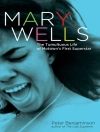This book teaches Baroque compositional techniques through writing and improvisation exercises and analysis of repertoire examples. It provides readers with a historical outlook by focusing largely on principles taught in treatises from the period 1680–1780. This expanded edition includes new sections with keyboard exercises that provide training in Partimento performance as it was practiced at the time, helping students master Baroque style from the inside. While the focus of the book is on fugue, it also treats chorale preludes, stylized dances, inventions, and trio sonatas. The volume is divided into two parts—basic and advanced— which could be taught in a two-semester sequence. There are various options to introduce material from Part II into Part I for a one-semester course.
Daftar Isi
Acknowledgments
Part I: Strict Style
1. Introduction
2. Melody or Harmony?
3. Harmonizing a Subject in Simple Counterpoint
4. Melodic Embellishment in Strict Style
5. Variation Techniques
6. Imitation at the Unison or Octave
7. Imitation at the Fifth
8. Remodulation and a Third Entry
9. Fugue Exposition
10. Tonal Answer
11. Thematic Presentations
12. Sequences and Episodes
13. Laying Out a Whole Piece
Part II: Free Style and Advanced Techniques
14. Advanced Embellishment—Free Style
15. Chromaticism and Sequences
16. Multiple Counterpoint
17. Writing an Original Subject
18. Stretto
19. Other Techniques
20. Overall Design and Layout of a Fugue
Appendix
Bibliography
Index
Tentang Penulis
Christoph Neidhöfer is Associate Professor in the Department of Music Research at Mc Gill University.
Peter Schubert is Professor in the Department of Music Research at Mc Gill University.












